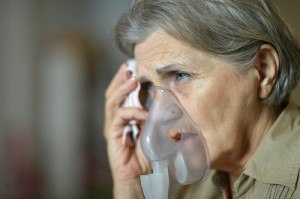 Results from a preliminary study of exhaled breath presented at the European Respiratory Society (ERS) International Congress 2014, suggest that temperatures higher than 34°C could be an indicator of the presence of lung cancer.
Results from a preliminary study of exhaled breath presented at the European Respiratory Society (ERS) International Congress 2014, suggest that temperatures higher than 34°C could be an indicator of the presence of lung cancer.
“Airway inflammation and angiogenesis play a key role in the pathogenesis of lung cancer. Exhaled breath temperature has been proven to be an indicator of airway inflammation and increased vascularity. The aim of our research is to determine possible correlations of exhaled breath with progression, metastasis or other clinical outcomes of patients with cancers,” Giulia Scioscia, MD, a fellow in pulmonary medicine at Hospital Clínic i Provincial de Barcelona, said in the congress news conference, according to Jim Kling from Medscape in an article covering the study.
Researchers analyzed 82 patients with a radiologic suspicion of breast cancer, using the X-Halo (Delmedica Investments) breath thermometer to determine if breath temperature correlated with a lung cancer diagnostic.
From the total patient cohort, lung cancer was later diagnosed in 40 people, and the remaining 42 served as healthy controls.
The team compared breath temperatures between lung cancer patients and controls, grouping them by sex, age, smoking habit, and the presence or absence of chronic obstructive pulmonary disease.
The results showed that patients who had cancer, independently of the category they were assigned to, had significantly higher breath temperatures than controls. Furthermore, using statistical analysis, researchers determined that values above 34°C would be an ideal threshold for signaling lung cancer, with 96% of patients who displayed temperatures in that range found to have the disease.
Despite the promising results, researchers noted that this was a pilot study and it’s still not sensitive enough. Nonetheless, it could eventually become part of a screening panel.
“I think the data are quite interesting. I’m not aware that anybody has done it before,” chair of the ERS lung cancer group Fernando Gamarra, MD, from Klinikum St. Elisabeth Straubing in Germany, told Medscape Medical News.
More factors that can affect breath temperature will need to be considered, such as exhaling velocity or overall size, since larger people can have higher breath temperatures.
In the future, researchers want to test this method in patients with other inflammatory conditions to understand its full potential. Furthermore, future research should also address if this approach could be used consistently in early-stage cancers, since the current study used only patients already presenting at a hospital. This novel approach would be extremely beneficial for early diagnosis of lung cancer.


